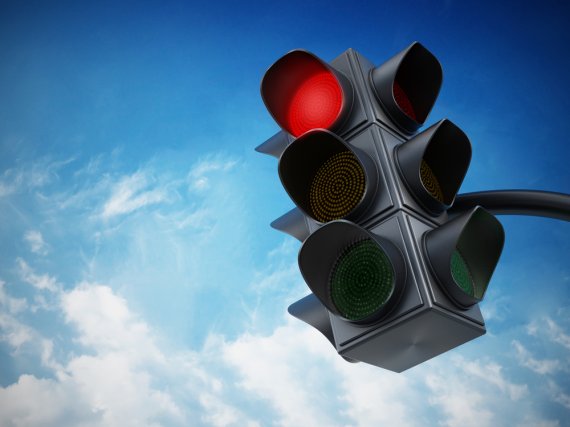The roads are empty, you are almost home. Better yet: you could have been home a long time ago, if all lights had been green. That certainly would have been possible, because there were barely any other cars on the road. This is frustrating. Smart traffic lights are the solution, as they constantly choose the shortest waiting times.
Markov
Researcher Rene Haijema from Operations Research and Logistics has a solution for this kind of situations. He applied the mathematical Markov decision process on real-life situations. Markov modelling is a method to find the optimal decision for issues that occur repeatedly. Haijema recently published three scientific articles in the book Markov Decision Processes in Practice, about practical applications of the model, including traffic lights at intersections that constantly have to choose between green, yellow and red. Thanks to the Markov approach, the light always chooses the shortest waiting time for cars.
Green
The basic data the model requires are the number of cars waiting in each queue and the current colour of the traffic lights. Based upon these, the model calculates which vehicles are allowed to cross the intersection. If many cars are waiting in a given queue, then the light will remain green longer or the light will turn green sooner than for a queue with fewer cars waiting. For an example, examine the image below… The queues marked in green – queues 1, 2, 7 and 8 – have simultaneous green lights. If each of these queues has a single car waiting, all four cars can cross at the same time. The red queues – 6 and 12 – can also drive at the same time, but that would only allow two cars to drive simultaneously. To achieve the shortest waiting time, queues 1, 2, 7 and 8 should be allowed to drive first.
Induction loops
This sounds logical. Moreover, the Markov model also considers that the cars in queues 6 and 12 should not be waiting too long in favour of the other queues. This is what sets Haijema’s system apart from current traffic lights, which use magnetic induction loops. Those are the black lines you often see on the road surface before traffic lights. The lines register cars that approach the traffic lights within five to ten seconds. Traffic lights will then remain on green longer, causing other drivers to sometimes wait for ages. That is far from ideal. ‘But the information from those induction loops is still very much required for my model’, explains Haijema. ‘Because that information tells you how many cars are currently waiting.’
Exhaust gasses
The model created by Haijema can be applied on simple, self-contained intersections. It becomes a lot harder for concatenated intersections, because driving speed and merging and exiting traffic are added to the equation. ‘Those are currently also the factors that complicate setting up green waves’, says Haijema. ‘That is why you still encounter red lights.’ Pedestrians have not been included in the model either. Doing that would require an expansion of the model, which would require a lot of extra work. Additional conditions are also an option, such as maximum waiting time per car, minimised production of exhaust gases or prioritising buses and trucks.
For now, Haijema’s traffic control only exists on paper. Live tests are expensive and a political business. The Markov decision process can also be used on other recurring issues, though. Haijema has applied it to collecting eggs in a henhouse, inventory management of perishables in super markets, blood platelets production in blood banks and fishing quota.


